RECREATIONAL TIME IN ADELAIDE
April 1865 to November 1866
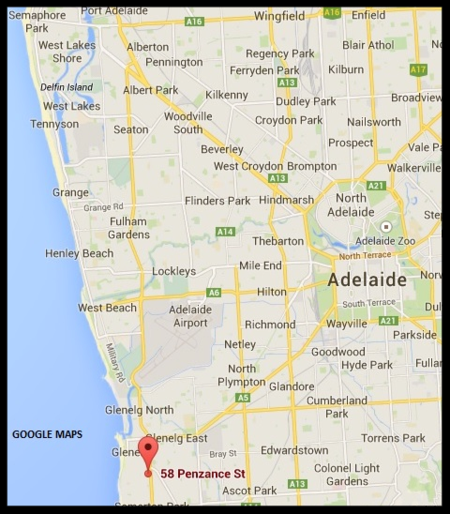
Neither of the members for the South-East arrived in time for the opening. Mr. Riddoch had his huge station property to set in order, and was not able to leave till early in April. Gordon, too, had his affairs to look after. Not being an experienced landowner, it took some time to settle his business, and although the House was now in session he lingered, seeing to this and that. Also, there were some steeplechases coming off that he was loth to miss.
CADGER, RED LANCER, AND INGLESIDE
He now owned three horses. Faithful Modesty was dead of old age; but there remained Cadger, who had won several small races in the district – “a really nice little hack,” Gordon described him, “long and low, with plenty of substance and a fair show of speed.” Red Lancer, the intrepid animal that had taken him over the Blue Lake Leap, and a new horse, Ballarat, bought earlier in the year. Gordon had been training this powerful black jumper himself, and was anxious to try out his paces in a big race. The Great Western Steeplechases at Coleraine were due; so off he went with Ballarat, although the horse was not yet in good form, and Cadger-while Mr. Riddoch sustained the honour of the South-East at Adelaide.
On April 20 a fine field of horses came out for the Great Western, an important event in the racing calendar. Handsome Ingleside was the favourite. The race turned out to be a good but not a spectacular one. All the horses got off together, and took the fences fairly evenly. At two or three jumps from home Ballarat established a lead, and it seemed as if the race might be his when he stumbled badly at the last fence but one, and let Ingleside and Blueskin pass him, finishing third to them.
Cadger did much better, and won a smaller event, the Maiden Steeplechase, for Gordon, with flying colours. So he returned to Mount Gambier not wholly dissatisfied.
WON BY HALF-A-MILE
He had intended leaving for Adelaide early in May. But the Penola races were in sight, and he entered Cadger for the steeplechase. Four horses came to the post; Cadger led off, the pace was brisk, and there were many falls. On the way home Cadger was still leading when the second horse fell, dragging his jockey. The third rider at once dismounted to help him, and Cadger cantered past the judge’s box half a mile ahead of the others.
The electors wondered why Mr. Gordon had not yet left to take his seat. He was still setting his affairs in order and there was a big meeting at Ballarat on May 11, where a select band of enthusiasts was trying to establish regular winter steeplechase meetings. The project was one with which Gordon strongly sympathised, and he found time to attend, taking Red Lancer and Ballarat. He rode Red Lancer in the Maiden Steeplechase. The horses made a good start together at the foot of the hill, and came nearly abreast to the first fence. At the third, a high, stiff post-and-rails, Red Lancer fell heavily and Gordon was struck senseless. He did not recover till some time after the race was over, and could not think of riding Ballarat in the Amateur Steeplechases, for which he was entered.
He returned discomfited to Mount Gambier. With the horses he set out at last for Adelaide.Maggie had gone to Adelaide by steamer and patiently awaited his arrival. On May 23-seven weeks after the House had resumed-he took the oaths and his seat for the South-East.
He rented a cottage at Glenelg, where he could be near the sea and within reach of his Parliamentary duties at North Terrace. The rambling weatherboard villa in Penzance street, with its three acres of land, partly old orchard and partly scrub and gum-trees (which has long since disappeared), suited him very well. There was plenty of room for the horses, and fences and fallen timber to school them over; for Glenelg was not then the populous suburb it now is, but a country district with few houses.
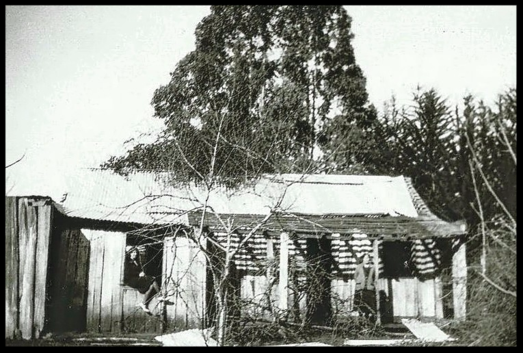
GORDON’S ADELAIDE ACTIVITIES OUTSIDE OF PARLIAMENT


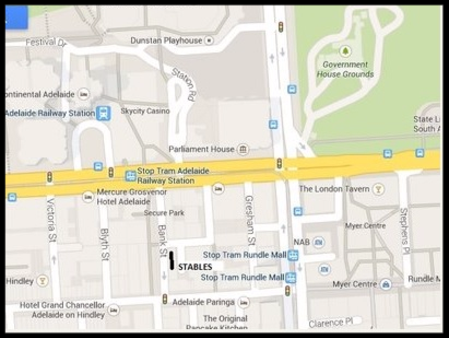
One by one the familiar landmarks of old Adelaide are disappearing to make room for more modern structures. One of the latest victims to fall into the hands of skilled wreckers is a small block of buildings in Bank-street, at the rear of the Eagle Hotel, and owned by the trustees of the Theatre Royal Estate.
The buildings comprise a one-storied block of three small shops, which have a picturesque history. They are amongst the first buildings to be erected in Adelaide at what was then the hub of the business centre.
Originally erected for stables in the late thirties, they were a popular meeting place for all visitors to Adelaide. It was here that Adam Lindsay Gordon stabled his horses, and it is said that many of his poems were inspired by chance meetings at the stables in the old coaching days.
In 1848 Messrs. W. K and JR. R. Hunt established a labor bureau in the building, and the old sign hanging over the entrance after the fashion of mid-Victorian inns still proclaims the activities of the firm, the business of which has been carried on under the same name by Mr. P. Hales for the past forty years. When the old buildings are demolished they will be replaced by a block of modern shops, with offices on an upper storey.
Here there was a loosebox where Adam Lindsay Gordon stabled Mr. E. G. Blackmore’s Launcelot while the poet prepared the horse for the first Adelaide Hunt Club Cup. Thebarton course.
Oct 2nd 1869- Launcelot ran fourth. The placed horses being Mr. S. Ferry’s Gypsy Girl (owner) 1. Mr. Mullin’s Lighfoot (owner) 2. and Mr w. Buckler’s Priam (Mr. A. Malcolm) 3.
Mr. E.G. Blackmore’s Launcelot, Late Dan O’Connell (aged) Mr. A.L. Gordon 4.
(Chronicle Adelaide, SA Saturday 16 January 1926 Page 46)
RACING AT THEBARTON

There is some confusion created in the fact that two racing organisations held events at the Thebarton course in the 1860s.
The South Australian Jockey Club commenced there over a 4 day event commencing 21st April 1864 and the Adelaide Hunt Club commenced their events there on the 2nd of October 1869 with Gordon on Blackmore’s Lancelot (Launcelot).
The course itself is described in Bell’s Life Sydney (29 Sep 1866 p2):
“The course was nearly the same as in previous years. The horses started from a post erected some 100 yards east of the Grand Stand, and ran due south. The first leap clears the section and lands the horses in a wheat paddock. They then turn their noses eastward, and make three other leaps over the fences of the roads and paddocks, and re-entering the racecourse they bear away to the north till they arrive at the Reedbeds-Road. Having cleared the northern fence to the section they cross the road and enter the wheat paddock on the opposite side. Here they pass over a two-railed made fence, and, turning homeward, they make the eighth leap into the race section. When opposite the Grand Stand they encounter tho water jump; consisting of a bank 4 feet 6 inches high, with a ditch of water on each side, making tho entire width to be cleared about 13 or 14 feet. Having taken this leap they go over the same course again till they enter the section the last time, when they turn on to the ordinary straight running and pass over a temporary hurdle instead of taking the water leap. There are in all 18 leaps and the distance is about four miles.”

From The Manning Index of South Australia at The State Library of South Australia:
In 1866 a gazetteer described Thebarton as “a postal suburb of the City of Adelaide. The district is an agricultural one, crops of hay being the principal produce… There is a fellmongery and a tannery [Peacock’s]… and a considerable number are engaged in gardening… Thebarton has two hotels – the Wheatsheaf and the Squatters’ Arms… The population, including that of the surrounding agricultural neighbourhood, numbers about 450 persons.” The Wheatsheaf had been built by the miller, William Gardiner, and opened for business in 1844 “for the purpose of affording accommodation to the numerous country settlers frequenting the mill at Thebarton [sic].” It was demolished and a new building of two storeys erected in 1922; the site occupied by the old structure is now a car park.
The land on which the Squatters’ Arms stands was purchased by Thomas Toole in 1839; by 1849 the half-acre block was owned by Patrick McCarron upon which he built and conducted the Foresters and Squatters’ Arms Hotel, subsequently leasing it to Charles Olarenshaw, of the Black Forest Inn, Bay Road, “together with the blacksmith’s shop and premises.” The name was apparently adopted because most of its patrons were drawn from farmers and farm workers who extended their patronage whilst attending the slaughter yards sited on the adjacent Park Lands.
BOXING IN NORWOOD


The Register (Adelaide, SA) 24 Aug 1923 p3:
A few days ago details were published of a racecourse accident which occurred at Edwardstown 50 years ago. Mr. T. Jackson, of Wheaton road, St. Peters, who was one of those smashed up, wandered into The Register Office on Thursday afternoon, and reported that he was none the worse for the mishap, which had happened so long ago. Mr. Jackson talks most entertainingly (about sporting eents : and other interesting happenings of half a century back. This is by no means surprising, for he was brought up in the very atmosphere of racing and boxing, and, in fact, of all branches of sport. He is a son of the late Mr. T. Jackson, who was one of the chief sporting identities of Adelaide between 50 and 70 years ago, and who had a well-known hair dressing and tobacconist’s establishment in Rundle street, and was also the first photographer in the State. In the race in which the younger Jackson met with his accident he was mounted on No Name, which belonged to Mr. W. M.Gail and as a result of his fall he was laid up for something like six weeks with concussion. Mr. Jackson recalls Adam Lindsay Gordon in a new role. Just about the time that the poet was a member of Parliament he rode up to Mr. Jackson, sen’s, shop, and said that he had heard that there was somebody nearby to Adelaide who could use his fists, and that he would be delighted if Mr. Jackson could arrange a private contest. This was quickly fixed up, in no professional way, for they were both amateurs, and met as such. The person selected for the match was George Cox, of Norwood, who was a bricklayer and when A. L. Gordon and Mr. Jackson. sen. drove to his home he was in his smock. The principals quickly got to work, and Gordon soon remarked, “Cox, if you are any good at all go your hardest. I am quite prepared for anything, and I do not want child’s play.” Without any more ado Cox upper-cut his opponent, and Gordon was laid flat. When he got up again he declared. “I thought there was no man living at the present time who could do that to me.”
HORSE TRAINING GLENELG TO SEACLIFFE
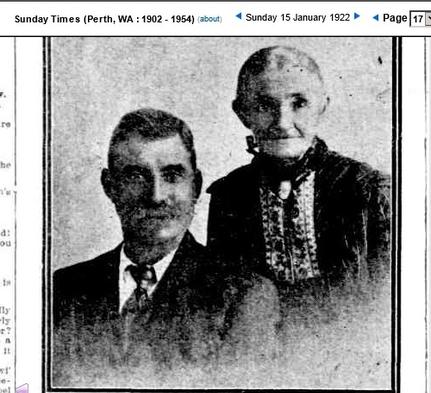
Mr. Sugars is well known in local racing circles, having raced a number of horses in this State, among them being that splendid hurdler Coromandel. And it was with Gordon Mr. Sugars, now in his 73rd year, secured his first billet in life as a stable lad.
He was about 13 then.
The poet, who had just come to live in Old Glenelg, and had not long been married, arranged with Mr. Sugars’ mother that “young Jim,” who could ride well, should enter his employ. There was one common bond or affinity between young Jim and his first master -their passionate love of the horse. There it ended.
Quotations from Virgil, Homer, and Ovid, and chunks of the Odessey chanted as they rode the now immortal Cadger and the other jumpers for exercise along the beach at Glenelg, soon firmly convinced young Jim that his master was mad and does not the poet in “Hippodromania” and other of his verses tender frequent apology-
“And the links of the past-but no matter,
For I’m getting beyond you, I guess,
And you’ll call me as ‘mad as a hatter’
If my thoughts I too freely express;
“When I first went to work for him,” remarked Mr. Sugars, “Gordon stabled his horses, including Cadger (in whom a Mr. Black was, I think, interested at the time), in an old bakehouse belonging to one Jonathan Hawkes,(a Glenelg identity and friend of Gordon’s) who at the time ran a store and a woodyard. Leading from the bakehouse to the street there was a short lane of about 30ft. to the street gate. The gate, a picket one, was well over 4ft. high, with a signboard above it which to the onlooker would scarcely permit of a horse and rider passing safely through, but occasionally Gordon would whip Cadger round in the short run and safely accomplish the dangerous jump. The aperture between the gate and the sign- board above barely afforded room for the feat.
“Later on we shifted down to New Glenelg, and that is where he got a big bay horse with a blaze, on which he won a steeplechase at Thebarton. This horse was related to Seagull, and Gordon said to me he only hoped he would prove as good. Probably this is the horse mentioned in ‘The Fields of Coleraine’-
‘There’s a horse in the race, with a blaze on his face,
And we know he can gallop a docker!
He’s proved himself stout, of his speed there’s no doubt,
And his jumping’s according to “Cocker.’
“He was a game, reckless rider, and always gave me the impression that he would like to get killed from the saddle. Though short sighted, he was, strange to say, not a bad field shot, and went in for quail shooting. I remember he had a favourite pointer dog.
“Mrs. Gordon was a kind and pleasant woman, a good housewife, and a good horsewoman. They seemed to get along very well together. Sometimes he would hunt or ride over cultivated ground, and I was frequently sent to inquire as to any claim there might be for damage done, and he used to ask Mrs. Gordon to give me the money to pay. On one occasion a gardener asked more than what the poet reckoned a reasonable amount, and he sent me along with the sum he himself assessed it at. It was accepted.
“There is another incident I would like to relate. R. B. Colley, a well- known resident of Glenelg, and Gordon had a difference over some matter. I have an idea Mr. Colley was a member of Parliament at the time. We were out walking morning exercise, and passing Colley’s place. Gordon, mounted on Cadger, noticed the latter in the paddock, which at that time was enclosed by a brick wall about 6ft. high, with broken bottles on top. ‘I’ll jump over and frighten him. Jim,’ cried Gordon to me; and the next moment I saw Cadger clear the wall.
“Colley, completely taken by surprise, pluckily went for Gordon with the hoe he was using, and the latter gained the road on the other side by flying over a 5ft. paling fence. Gordon, usually taciturn, seemed to enjoy the escapade immensely. ‘I think I frightened him, Jim,’ he said, as he rode up to me patting Cadger on the neck.’ Yes, sir.’ I answered.
“He was a good swimmer himself, and a great believer in swimming his horses. He loved the sea. We used to swim Cadger from the Glenelg jetty to the Point, a distance of nearly a mile. Cadger was a bay horse with black points, long and low and a perfect jumper. I used to ride him in his swims. Mr. Gordon riding along the shore, carefully watching us. He never had much to say to me, but was always kind and considerate. He was strict, and taught me how to conduct myself. He was a very particular man about his horses and riding gear, boots, breeches, gaiters, etc. He was reserved and uncommunicative, and when we were out exercising he was always reciting or chanting something to himself. I honestly believed he was mad.”
Just here a line or two from “Banker’s Dream” concerning the poet and his favourite steeplechase!’
“Ha! Cadger goes down; see, he stands on his crown-
Those rails take a power of clouting-
A long sliding blunder-he’s up-well, I wonder
If now it’s all over bar shouting.
“All loosely he’s striding, the amateur’s riding
All loosely, some reverie lock’d in
Of a ‘vision in smoke,’ or a ‘Wayfaring bloke’,
His poetical rubbish concocting.
“And ‘Banker for choice’ is the cry, and one voice
Screams, ‘ Six to four once upon Banker;’
‘Banker wins,’ ‘Banker’s beat,’ ‘Cadger wins,’-A dead heat’-
‘Ah! there goes Fred’s whalebone a flanker.”
As stable lad Mr. Sugars accompanied the centaur-poet with his horses on a round of meetings in South Australia and across the Victorian border, which enterprise, as far as young Jim was concerned, terminated at the then small settlement of Horsham, where the lure of the circus, coupled with an attack of homesickness, proved too strong, and he cleared from the horseman-poet and joined Ashton’s Circus, then en-route to the South Australian capital. He knew that the circus caravan traversed the road that would lob him within easy walking distance of his Mecca the home in old Glenelg where he was born. Being accustomed to horses, his services were readily accepted by Mr. Ashton (“Sawdust” Ashton, a noted pioneer circus man), who casually remarked that Jim was as gloomy and serious-looking as his principal clown. “Sawdust” was accounted to be some wit.
But to continue Mr. Sugars’ narrative. “When we went on the racing tour we stayed a while at Morphett’s station on the Koowong, a tributary of the Murray. Gordon was a great friend of the Hon. John Morphett. Gordon would ride anything. He had a peculiar seat in the saddle and rode long, in English style, leaning right over on coming to a fence, and throwing himself back on the horse’s croup when in the act of landing. That is why I could not understand how he did not knock his head off in the bakehouse leap on mornings.
“It was when we were at Mt. Gambier that he did the famous leap. I did not see him do it, but think from what I can remember it was the outcome of some argument he had with another sporting Englishmen then in the township. It was a topic among the stable-men and others about the hotel where we stayed and had our horses stabled. I cannot remember whether it was performed on Cadger or on another jumper-a roan mare-we had with us. I never knew him to drink or gamble He always sent me early to bed when on the racing trip-soon after feeding up.’ He used to smoke a good deal. I never saw him use his fists, but he had a fearless glitter in his steely grey eyes, and was tall, thin, and wiry, and had very long arms.”
“Sawdust” Ashton had hardly superintended the adjustment of the last peg of the tent that had risen, mushroom-like, on the circus ground of the Holy City when a very worn-out, conscience-stricken little Jim entered the gate of the Sugars’ homestead at Old Glenelg.
When the poet returned, to Glenelg Jim’s mother took a hand. “Go at once to Mr. Gordon and try if you can to apologise for your unpardonable behavior in leaving him.”
Jim went, Gordon greeted him kindly. “I think you made a mistake in leaving me, Jim.”
“Yes, sir,” readily agreed young Jim, who, glad to be forgiven by his former master, had not quite forgotten his thrilling circus experience.
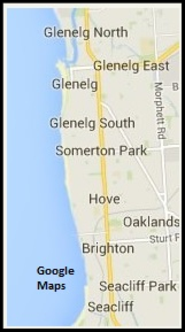
The West Australian (Perth, WA) 28 Oct 1933 p5:
For many months, indeed, he formed part of the Gordon menage in the days when the poet lived at Glenelg and later at Mt. Gambier, that is to say, a year or two before Gordon’s disastrous livery stable venture at Ballarat had paved the way to ultimate ruin and tragic death. Sitting on the verandah of his house at Belmont. on Monday last, gazing across the marigolds in his garden and the waters of the Swan, Mr. Sugars took me back with him to the rambling, one storey weatherboard cottage seven miles from Adelaide, in what is now Penzance street, New Glenelg, for which the poet had much affection. Here it was that the poet brought Mrs. Gordon after he took his seat in the South Australian House of Assembly, and in this neighbourhood some of his best poems were writ- ten. There were not many houses about then. In those years (1865 and 1866) Gordon was training Cadger to become a famous steeplechaser. He would ride the horse across country in the daytime and bring him back to the boy Sugars to be groomed and fed. The stables were a mile or more away from the Gordon cottage, where Cadger and Mrs. Gordon’s grey mare were boxed in an old bakehouse on the neighbouring property belonging to Jonathan Hawkes, one of Gordon’s friends. As groom, Sugars lived on the premises. Sometimes he would accompany Mrs. Gordon into Adelaide in the dog-cart, shopping — a small lady, cheerful and agreeable, who hardly came up to Gordon’s shoulder, so that it was amusing to see them together. ‘The Air of a Gentleman.’ Gordon was then in his 30’s, over 6ft. in height, gaunt and reserved, with at that time clean-shaven mouth and chin and old style English side-whiskers. It was later on that he grew that ragged beard so characteristic of the lean ghost, in tartan riding jacket, who rides through the early files of ‘The Australasian.’ Gordon had, to use Mr. Sugars’s own words, the air of a gentleman; he treated you as such, and you were bound to respect him. He was short-sighted and reserved. Out riding Cadger he always seemed to be humming or repeating something he had in his mind— poetry no doubt. Mr. Sugars’s favourite picture of him is of a long lean figure cantering across open paddocks and training Cadger to take fences, for steeplechases in those days were cross-country affairs of several miles distance. At other times Cadger would be taken down to the beach for exercise. Mr. Sugars remembers that Gordon won one race at a meeting at Adelaide while he was in his employ. Mrs. Gordon, too, was a fine horsewoman, riding side-saddle as women then did. In due course the whole menage shifted to ‘the Mount’ (Mt. Gambier), 300 miIes away. They did not follow the main road but rode by another route, camping at different stations en route and crossing the Murray in a punt. The Gordons had no family then, their little daughter, who died at Ballarat at the age of 10 mouths, being born afterwards. It was in this district in the south-east, near the Victorian border, that Gordon had earlier lived as policeman and horsebreaker, though at the time Mr. Sugars had not been acquainted with all the details of his previous history that have since been made public. It was in the vicinity of Mt. Gambier a few years previously that Gordon had madehis. famous leap over the fence on to a 10ft. ledge on the precipitous edge of Blue Lake. Some distance away was Cape Northumberland, where in 1859 the Admella, carrying many Adelaide passengers to Melbourne for the races, had struck a reef and broke, with great loss of life, in the two or three days before relief could be obtained. Gordon, then in the middle of his career as a horsebreaker, was one of those who then rode for relief. This ride he has dramatically described in his well-known poem, ‘From the Wreck,’ which, like other of Gordon’s verse, is full of the rhythm of galloping horses. From Mt. Gambier Mr. Sugars also accompanied the Gordons on one of their visits to Dingley Dell, where they had bought a little four-roomed cottage in a beautiful position near Port McDonnell.

The Mail (Adelaide, SA) 23 Dec 1933 p7 combined with 22 Sep 1928 p21:
How Australia’s national poet galloped his horse straight past a property owner and jumped over two fences, which the owner had objected to his using as hurdles, is told bv Mr. J A V. Brown, of Brighton, who will be 82 vears of age a fortnight from next Monday. (December 1933).
He knew Adam Lindsay Gordon about the year 1864, when Gordon was living in a cottage in Penzance street. Glenelg.
Gordon used to train horses at what is now Seacliff. ‘I was a boy at the time minding sheep, and I used to assist Gordon to dry his horses down.’Said Mr. Brown.’
‘I was as proud of the job as be was of the horses, because I looked on him as a superman, especially when he jumped over some of the fences.
Two of the fences he occasionally jumped were owned bv a man named Cox, who objected to it.
The old chap asked me if I knew his name, but naturally. I said. ‘No.’ The next day A L. G. came along as usual, and I told him that Mr. Cox had questioned me.
‘I saw Mr. Cox waiting for Gordon. A. L. was a bit near-sighted and I well remember him shading his eyes with his hand and saying. I see him.’ He put his horse into a gallop. and rode straight for him, over the fence, and out again into the road, much to the surprise of the old chap who was waving his arms. ‘ As he rode back, he gave me 5/-.’
Gordon asked me to go to the races at Thebarton and I made a beeline for the course although I had to give another boy a shilling to mind my sheep to enable me to go across country to Thebarton Racecourse. Then Gordon soon saw me. ‘You are my stable boy today’, said he. ‘Look after this horse I’m leading. and if anybody dares to touch it, call a policeman.
Gordon was riding in the race. I was glued to the fence, watching him, and he won. He gave me another 5/- as he bad me goodbye, and that is the last that I ever saw of the hero of my boyhood.
Mr. Brown, who is a former member of Parliament for the Northern Territory, said that he had to run all the way back to be in time to take the sheep home.
SEASIDE HOTEL BRIGHTON
The Kadina and Wallaroo Saturday 11th November 1933 pg1
Adam Lindsay Gordon smoked his pipe and drank his ale at The Seaside Hotel at Brighton S.A. A nook by an old fireplace, still standing, is pointed out as his favourite haunt. (In 1900 The Seaside Hotel at Brighton is listed as being transferred from an Hotel to a Boarding House.)
